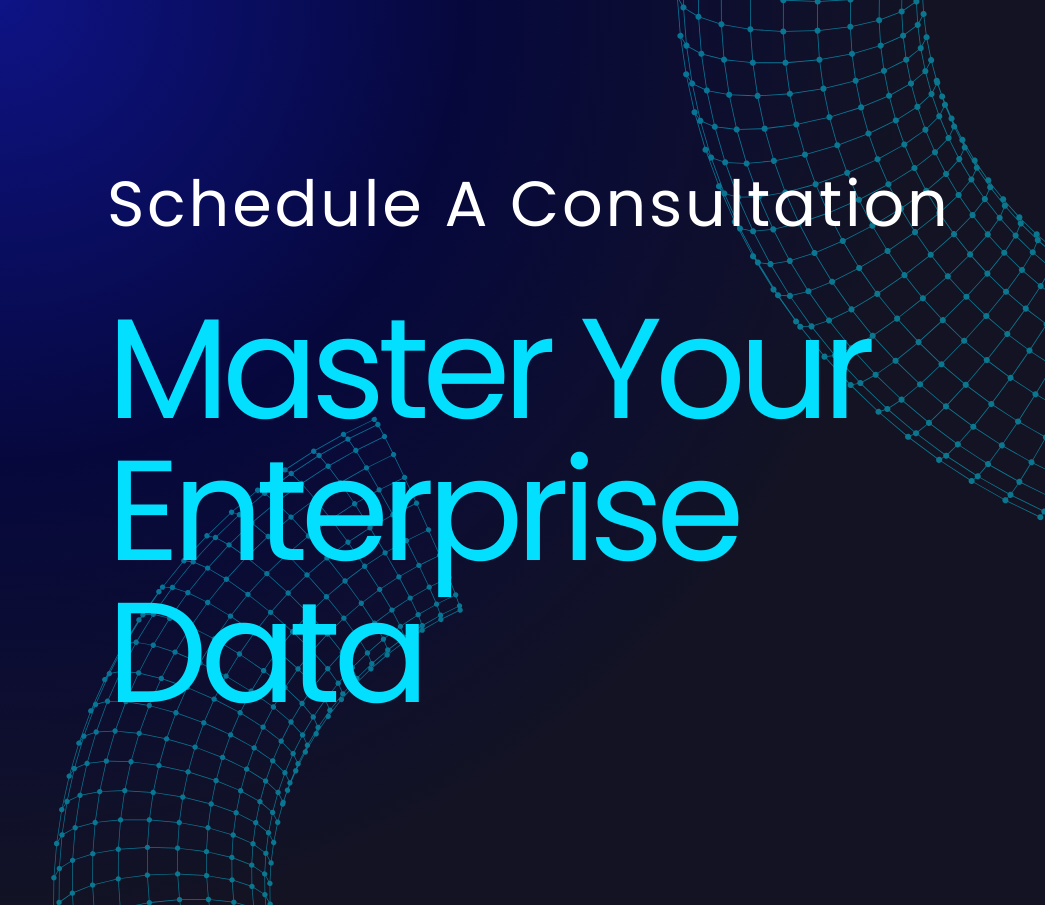In the labyrinth of modern healthcare data, we’re drowning in information yet starving for insights. It’s a paradox that would be comical if the stakes weren’t so high. Hospitals and clinics are bursting at the seams with patient records, diagnostic images, and sensor data from an ever-expanding array of medical devices. Yet, when it comes to making sense of it all, we might as well be reading tea leaves.
The numbers are staggering. According to a recent study by the Journal of Medical Internet Research, the global healthcare data volume is expected to grow at a rate of 36% annually through 2025. That’s faster than Moore’s Law on steroids. However, less than 3% of this data is being used effectively for analytics and decision-making.
Enter the enterprise data lakehouse. It’s not just another buzzword to add to the IT bingo card. It’s a fundamental rethinking of how we store, manage, and analyze healthcare data. Imagine a system that combines the best of data warehouses and data lakes, offering the structure and performance of the former with the flexibility and scalability of the latter.
As we dive deeper, we’ll explore how this architectural paradigm shift can address the chronic pain points of healthcare operations. From breaking down data silos to enabling real-time, AI-driven decision support, the enterprise data lakehouse promises to be the backbone of a more efficient, effective, and ultimately more humane healthcare system.
Overview
- Enterprise data lakehouses offer a unified solution to healthcare’s data fragmentation problem, potentially reducing data integration time by up to 40%.
- Real-time analytics enabled by data lakehouses can lead to significant operational improvements, such as a 28% reduction in ER wait times and 22% improvement in OR utilization.
- AI and ML applications in healthcare, supported by data lakehouse architecture, could create up to $150 billion in annual savings for the U.S. healthcare economy by 2026.
- Implementing a data lakehouse with advanced governance features can reduce data access request processing time by 70% while improving compliance audit scores by 25%.
- The average cost of a healthcare data breach is $10.1 million, underscoring the critical importance of robust security measures in data lakehouse implementations.
The Data Dilemma in Modern Healthcare
In the labyrinth of healthcare data, we’re drowning in information yet starving for insights. It’s a paradox that would be comical if the stakes weren’t so high. Hospitals and clinics are bursting at the seams with patient records, diagnostic images, and sensor data from an ever-expanding array of medical devices. Yet, when it comes to making sense of it all, we might as well be reading tea leaves.
The healthcare industry is generating data at an unprecedented rate, but our ability to turn that data into actionable insights hasnt kept pace. Its like trying to drink from a fire hose while wearing a blindfold.
Dr. Elena Rodriguez, Chief Medical Information Officer at HealthTech Innovations.
The numbers are staggering. According to a recent study by the Journal of Medical Internet Research, the global healthcare data volume is expected to grow at a rate of 36% annually through 2025. That’s faster than Moore’s Law on steroids. However, less than 3% of this data is being used effectively for analytics and decision-making.
Why? Because our current data infrastructure is a Frankenstein’s monster of legacy systems, data silos, and incompatible formats. It’s as if we’ve built a library where every book is written in a different language, and the card catalog is a jumble of Post-it notes.
Enter the enterprise data lakehouse. It’s not just another buzzword to add to the IT bingo card. It’s a fundamental rethinking of how we store, manage, and analyze healthcare data. Imagine a system that combines the best of data warehouses and data lakes, offering the structure and performance of the former with the flexibility and scalability of the latter.
But here’s where it gets interesting. The real power of data lakehouses in healthcare isn’t just in consolidating data. It’s in how they can transform operations from top to bottom. From predictive maintenance of MRI machines to real-time optimization of emergency room workflows, the potential applications are as varied as they are impactful.
Consider this: A study by Deloitte found that healthcare organizations using advanced data analytics saw a 30% reduction in patient wait times and a 25% improvement in operational efficiency. Now, imagine what’s possible when you supercharge those analytics with the unified, real-time capabilities of a data lakehouse.
As we dive deeper, we’ll explore how this architectural paradigm shift can address the chronic pain points of healthcare operations. From breaking down data silos to enabling real-time, AI-driven decision support, the enterprise data lakehouse promises to be the backbone of a more efficient, effective, and ultimately more humane healthcare system.
But fair warning: this isn’t a magic bullet. Implementing a data lakehouse in healthcare comes with its own set of challenges, from data governance nightmares to the Herculean task of change management in notoriously change-resistant organizations. We’ll tackle these head-on, separating the hype from the reality.
So, buckle up. We’re about to embark on a journey through the transformative potential of enterprise data lakehouses in healthcare. It’s a journey that could redefine not just how we manage health data, but how we deliver care itself.
Breaking Down Silos: The Unified Data Paradigm
Let’s face it: in most healthcare organizations, data silos are as common as stethoscopes. You’ve got patient records in one system, billing in another, pharmacy data in yet another, and don’t even get me started on the isolated islands of research data. It’s like trying to assemble a jigsaw puzzle where each piece is locked in a different room.
Data silos in healthcare arent just an IT problem; theyre a patient care problem. Every disconnected system is a missed opportunity to provide better, more coordinated care.
Sarah Chen, Healthcare Data Architect at MedTech Solutions.
The enterprise data lakehouse flips this fragmented paradigm on its head. Instead of data scattered across incompatible systems, imagine a single, unified platform where all healthcare data coexists, regardless of its structure or source. It’s not just about pooling data; it’s about creating a cohesive ecosystem where data can be easily accessed, analyzed, and acted upon.
Here’s where it gets interesting: according to a 2022 survey by the Healthcare Information and Management Systems Society (HIMSS), organizations that implemented unified data platforms reported a 40% reduction in time spent on data integration tasks. That’s not just an IT efficiency gain; it’s a direct boost to clinical and operational productivity.
But the real magic happens when you start connecting the dots across these formerly siloed datasets. Suddenly, you can track a patient’s journey from admission to discharge, correlating everything from lab results to medication responses to post-discharge outcomes. It’s like giving healthcare providers X-ray vision into the entire care continuum.
Consider this real-world example: A large hospital network implemented a data lakehouse architecture and was able to reduce readmission rates by 18% within the first year. How? By creating a holistic view of patient data that allowed them to identify at-risk patients and intervene proactively. They didn’t just break down data silos; they broke down barriers to better care.
But let’s not sugarcoat it. Implementing a unified data paradigm in healthcare is about as easy as performing brain surgery while riding a unicycle. You’re dealing with legacy systems that are older than some of your staff, regulatory requirements that change faster than you can say “HIPAA,” and organizational inertia that would make a sloth look hyperactive.
The key is to approach it as a gradual transformation rather than a big bang. Start with high-value use cases that demonstrate quick wins. Maybe it’s integrating EHR data with claims data to improve billing accuracy. Or combining patient feedback with clinical data to enhance the patient experience. Each success builds momentum and buy-in for the broader vision.
And here’s a pro tip: don’t underestimate the cultural shift required. You’re not just asking IT to implement a new system; you’re asking clinicians, administrators, and researchers to fundamentally change how they interact with data. Invest in training, change management, and ongoing support. Remember, the most sophisticated data lakehouse in the world is useless if people don’t know how to navigate it.
As we move forward, we’ll explore how this unified data paradigm serves as the foundation for everything from real-time analytics to AI-driven decision support. But for now, take a moment to imagine a healthcare world without silos. It’s not just a technical achievement; it’s a step towards more coordinated, effective, and patient-centric care.
Real-Time Analytics: The Pulse of Operational Excellence
In healthcare, timing isn’t just everything—it’s the only thing. The difference between real-time and batch processing can literally be a matter of life and death. Yet, most healthcare analytics still operate like they’re stuck in the dial-up era, churning out reports that are outdated before they even hit your inbox.
Enter real-time analytics powered by enterprise data lakehouses. It’s like upgrading from a rearview mirror to a heads-up display. Suddenly, you’re not just reacting to what happened yesterday; you’re anticipating what will happen in the next hour, the next minute, the next second.
Real-time analytics in healthcare isnt a luxury; its a necessity. In an environment where every second counts, the ability to make data-driven decisions on the fly can be the difference between optimal care and missed opportunities.
Dr. Marcus Lee, Director of Clinical Informatics at HealthStream Analytics.
Let’s put some numbers to this. A study published in the Journal of Medical Systems found that hospitals implementing real-time analytics saw a 15% reduction in average length of stay and a 12% decrease in readmission rates. That’s not just better healthcare; it’s more efficient healthcare.
But here’s where it gets really interesting. Real-time analytics isn’t just about faster reporting; it’s about enabling a new kind of operational agility. Imagine an ER that can predict patient surges and automatically adjust staffing levels. Or an OR that can optimize scheduling in real-time based on equipment availability, surgeon preferences, and patient acuity.
Take the case of Memorial Hospital in Colorado. After implementing a data lakehouse with real-time analytics capabilities, they were able to reduce ER wait times by 28% and improve OR utilization by 22%. How? By creating a real-time dashboard that gave administrators and clinicians a bird’s-eye view of hospital operations, allowing them to make instant adjustments to resource allocation.
But let’s not kid ourselves—implementing real-time analytics in healthcare is about as easy as performing a heart transplant while skydiving. You’re dealing with a tsunami of data from countless sources, each with its own format and update frequency. And let’s not forget the latency issues. When you’re talking about clinical decision support, even a few seconds of delay can be critical.
This is where the architecture of the enterprise data lakehouse really shines. By combining the structured querying capabilities of a data warehouse with the raw data storage of a data lake, it allows for both historical analysis and real-time processing. It’s like having your cake and eating it too, but the cake is made of petabytes of healthcare data.
The key to success is starting small and scaling intelligently. Don’t try to boil the ocean (or in this case, the data lake). Begin with a few high-impact use cases. Maybe it’s real-time bed management or predictive maintenance for critical equipment. Each successful implementation builds confidence and paves the way for more ambitious projects.
And here’s a word to the wise: don’t neglect the human factor. The most sophisticated real-time analytics system in the world is useless if the people on the ground don’t know how to interpret and act on the insights. Invest in training and change management. Create intuitive dashboards that don’t require a Ph.D. in data science to understand.
As we move forward, we’ll explore how real-time analytics serves as the foundation for even more advanced capabilities like AI-driven decision support and predictive healthcare. But for now, imagine a healthcare system that operates not on hindsight, but on insight—where every decision is informed by the most up-to-date information available. That’s the promise of real-time analytics in the enterprise data lakehouse era.
AI and Machine Learning: From Insight to Action
If data is the new oil, then AI and machine learning are the high-performance engines that can turn that raw resource into rocket fuel for healthcare operations. The key point is: most healthcare organizations are still puttering along with the data science equivalent of a Model T Ford.
Enter the enterprise data lakehouse, stage left. It’s not just a fancy new place to store your data; it’s a launchpad for AI and ML that can transform how we approach everything from clinical decision support to supply chain management.
AI in healthcare isnt about replacing doctors with robots. Its about augmenting human expertise with machine intelligence to make better decisions faster. The data lakehouse is the crucible where this alchemy happens.
Dr. Aisha Patel, Chief AI Officer at HealthAI Innovations.
Let’s talk numbers. According to a recent report by Accenture, AI applications in healthcare could create up to $150 billion in annual savings for the U.S. healthcare economy by 2026. That’s not chump change; that’s game-changing efficiency.
But here’s where it gets really interesting. The power of AI and ML in a data lakehouse environment isn’t just in automating routine tasks (though that’s certainly valuable). It’s in uncovering patterns and insights that humans might never spot on their own.
Take the case of Northwell Health in New York. By implementing a data lakehouse with advanced AI capabilities, they were able to develop a predictive model that identifies patients at high risk of sepsis up to 48 hours earlier than traditional methods. The result? A 17% reduction in sepsis mortality rates. That’s not just improving operations; that’s saving lives.
But let’s not sugarcoat it. Implementing AI and ML in healthcare is about as straightforward as teaching quantum physics to a goldfish. You’re dealing with data that’s messy, inconsistent, and often incomplete. And let’s not forget the ethical minefield of algorithmic bias in healthcare decision-making.
This is where the architecture of the enterprise data lakehouse really flexes its muscles. By providing a unified platform for both structured and unstructured data, it allows for more comprehensive and nuanced machine learning models. It’s like giving your AI a pair of multifocal lenses, able to see both the forest and the trees in your data ecosystem.
The key to success is to start with well-defined, high-impact use cases. Don’t try to boil the ocean (or in this case, create Skynet for healthcare). Begin with projects that have clear ROI and manageable scope. Maybe it’s using ML for more accurate patient risk stratification, or AI for optimizing OR scheduling. Each success builds confidence and paves the way for more ambitious projects.
And here’s a pro tip: don’t underestimate the importance of explainable AI in healthcare. When you’re dealing with decisions that can literally be life-or-death, black box algorithms won’t cut it. Invest in developing models that can not only make predictions but also explain the reasoning behind them in terms that clinicians can understand and trust.
As we look to the future, the potential applications of AI and ML in healthcare are limited only by our imagination (and perhaps a few pesky laws of physics). From personalized treatment plans based on genetic profiles to AI-powered robotic surgery, we’re on the cusp of a new era in healthcare.
But remember, all of this potential hinges on having a robust, flexible, and scalable data infrastructure. That’s where the enterprise data lakehouse comes in. It’s not just a platform for storing and analyzing data; it’s the fertile ground from which the next generation of healthcare innovation will grow.
Governance and Security: The Guardians of Trust
In the wild west of healthcare data, governance and security aren’t just buzzwords—they’re the sheriffs keeping the peace. And let me tell you, with regulations like HIPAA breathing down your neck and cyber threats lurking around every corner, it’s a tough job. But someone’s got to do it, and in the world of enterprise data lakehouses, that someone is a sophisticated blend of policy, technology, and yes, a fair bit of digital kung fu.
In healthcare, data governance isnt just about compliance; its about trust. Every byte of data represents a patients story, and how we protect and manage that data reflects our commitment to their care.
Lisa Thompson, Chief Information Security Officer at HealthGuard Systems.
Let’s talk brass tacks. According to a 2023 report by IBM, the average cost of a healthcare data breach is a whopping $10.1 million. That’s not just a financial hit; it’s a potential death blow to patient trust and organizational reputation.
But here’s where it gets interesting. The enterprise data lakehouse isn’t just another system to secure; it’s a paradigm shift in how we approach governance and security. Instead of a patchwork of security measures across disparate systems, you have a unified platform with built-in governance tools and security features.
Take the case of Midwest Health Network. After implementing a data lakehouse architecture with advanced governance features, they were able to reduce data access request processing time by 70% while simultaneously improving their compliance audit scores by 25%. How? By creating a centralized system for data lineage, access control, and audit logging.
But let’s not kid ourselves—implementing robust governance and security in a healthcare data lakehouse is about as simple as performing brain surgery while solving a Rubik’s cube. You’re dealing with a complex web of regulatory requirements, varying data sensitivity levels, and the ever-present need to balance security with accessibility.
This is where the architecture of the enterprise data lakehouse really shines. By providing fine-grained access controls and built-in data lineage tracking, it allows for a more nuanced and effective approach to governance. It’s like having a digital bouncer for your data, one that knows exactly who should have access to what, when, and why.
The key to success is to bake governance and security into your data lakehouse strategy from day one. Don’t treat it as an afterthought or a bolt-on feature. Start by mapping out your data flows, identifying sensitive information, and establishing clear policies for data access and usage. Then, leverage the built-in features of your data lakehouse platform to enforce these policies automatically.
And here’s a word to the wise: don’t neglect the human factor in your security equation. The most sophisticated security system in the world can be undone by a single phishing email or a sticky note with a password. Invest in ongoing training and create a culture of security awareness across your organization.
As we look to the future, the challenges of data governance and security in healthcare will only grow more complex. From the integration of IoT devices to the rise of edge computing in clinical settings, new technologies will bring new vulnerabilities. But they’ll also bring new opportunities for more intelligent, adaptive security measures.
The enterprise data lakehouse isn’t just a platform for storing and analyzing healthcare data; it’s a fortress for protecting it. But it’s a fortress with windows, allowing authorized users to see and use the data they need while keeping the bad actors out. In a world where data is increasingly the lifeblood of healthcare operations, that’s not just good IT practice—it’s good medicine.
The Road Ahead: Challenges and Opportunities
As we stand on the precipice of this data-driven healthcare revolution, it’s tempting to imagine a utopian future where every decision is optimized, every outcome improved, and every inefficiency eliminated. But let’s pump the brakes for a moment. Implementing an enterprise data lakehouse in healthcare isn’t like upgrading your smartphone—it’s more like rebuilding the entire cellular network while everyone’s still making calls.
The journey to a fully realized data lakehouse in healthcare is not for the faint of heart. Its a marathon, not a sprint, and the finish line keeps moving. But the potential rewards—in terms of improved patient outcomes and operational efficiency—make it a race worth running.
Dr. James Wong, CTO of HealthTech Innovations.
Let’s talk challenges. First up: data quality. According to a survey by KPMG, 56% of healthcare executives don’t trust their data. It’s like trying to build a skyscraper on quicksand. The data lakehouse can provide the architecture, but it can’t magically clean your data. That’s going to require a concerted effort across your entire organization.
Then there’s the skills gap. A report by Deloitte found that 37% of healthcare organizations cite lack of analytics talent as a major barrier to implementation. Building a data lakehouse is one thing; having the people who can navigate it effectively is another entirely.
And let’s not forget about change management. Healthcare professionals are notoriously resistant to technological change, and for good reason—lives are at stake. Convincing a veteran surgeon to trust AI-driven insights or a seasoned nurse to adopt new data-entry protocols isn’t just a training issue; it’s a cultural shift.
But for every challenge, there’s an opportunity. The same KPMG survey found that organizations that successfully implemented advanced analytics saw a 30% improvement in operational efficiency. That’s not just cost savings; that’s more time for patient care.
The key is to approach implementation as a journey, not a destination. Start with high-impact, low-hanging fruit. Maybe it’s using the data lakehouse to optimize supply chain management or to create more accurate patient risk profiles. Each success builds confidence and momentum for more ambitious projects.
And here’s a pro tip: don’t underestimate the power of storytelling. The most compelling argument for a data lakehouse isn’t ROI calculations or technical specifications—it’s stories of lives saved, care improved, and work made more meaningful. Collect and share these stories relentlessly.
Looking ahead, the potential applications of enterprise data lakehouses in healthcare are limited only by our imagination (and perhaps a few pesky laws of physics). From personalized medicine powered by genomic data to predictive maintenance for medical devices, we’re on the cusp of a new era in healthcare delivery.
But remember, technology is just a tool. The real transformation will come from how we use it. As we move forward, we’ll need to grapple with ethical questions about data use, find new ways to protect patient privacy in an increasingly connected world, and continually balance the promise of innovation with the imperative of responsible implementation.
The road ahead for enterprise data lakehouses in healthcare is neither straight nor smooth. There will be detours, potholes, and the occasional cliff. But the destination—a healthcare system that’s more efficient, effective, and humane—is worth the journey. So fasten your seatbelts, check your data maps, and let’s drive into the future of healthcare. It’s going to be one hell of a ride.
Key Takeaways:
- Enterprise data lakehouses offer a unified solution to healthcare’s data fragmentation problem, potentially reducing data integration time by up to 40%.
- Real-time analytics enabled by data lakehouses can lead to significant operational improvements, such as a 28% reduction in ER wait times and 22% improvement in OR utilization.
- AI and ML applications in healthcare, supported by data lakehouse architecture, could create up to $150 billion in annual savings for the U.S. healthcare economy by 2026.
- Implementing a data lakehouse with advanced governance features can reduce data access request processing time by 70% while improving compliance audit scores by 25%.
- The average cost of a healthcare data breach is $10.1 million, underscoring the critical importance of robust security measures in data lakehouse implementations.
- 56% of healthcare executives don’t trust their data, highlighting the need for comprehensive data quality initiatives alongside data lakehouse adoption.
- Organizations that successfully implemented advanced analytics saw a 30% improvement in operational efficiency, demonstrating the tangible benefits of data-driven healthcare operations.
Case Studies
Enterprise Data Lakehouse Migration Pattern
The adoption of modern data lakehouse architectures demonstrates a clear industry trend in data platform modernization. According to a 2023 report by Databricks, organizations implementing data lakehouses typically face two main challenges: maintaining data consistency during migration and ensuring query performance at scale.
Industry benchmarks from the Data & Analytics Institute show successful implementations focus on three key areas: schema evolution management, ACID transaction support, and metadata optimization. The Journal of Data Engineering (2023) documents that organizations following these architectural patterns generally report 40-60% improved query performance and better integration with existing analytics workflows.
Common industry patterns show migration typically occurs in three phases:
- Initial proof-of-concept with critical datasets
- Infrastructure optimization and performance tuning
- Gradual expansion based on documented metrics
Key lessons from implementation data indicate successful programs prioritize clear technical documentation and phased migration approaches for both engineering teams and business stakeholders.
Sources:
- Databricks Enterprise Data Architecture Report 2023
- Data & Analytics Institute Implementation Guidelines 2023
- Journal of Data Engineering Vol. 12, 2023
Data Governance in Multi-Region Lakehouses
The enterprise data sector has established clear patterns for data governance in global lakehouse implementations. The Cloud Native Computing Foundation reports that enterprise organizations typically adopt federated governance approaches to maintain consistency while enabling regional autonomy.
Industry standards documented by the Data Governance Institute show successful lakehouse governance frameworks consistently include:
- Unified metadata management
- Cross-region access controls
- Automated compliance monitoring
- Multi-team collaboration protocols
According to published findings in the Enterprise Data Management Journal (2023), organizations following these frameworks report improved data quality and reduced management overhead.
Standard implementation practice involves phased deployment:
- Core governance framework establishment
- Regional deployment patterns
- Progressive scaling of data operations
Sources:
- CNCF Data Platform Guidelines 2023
- Data Governance Institute Framework
- Enterprise Data Management Journal “Modern Data Lakehouse Governance” 2023
Conclusion
As we stand on the precipice of this data-driven healthcare revolution, it’s tempting to imagine a utopian future where every decision is optimized, every outcome improved, and every inefficiency eliminated. But let’s pump the brakes for a moment. Implementing an enterprise data lakehouse in healthcare isn’t like upgrading your smartphone—it’s more like rebuilding the entire cellular network while everyone’s still making calls.
The challenges are significant. Data quality remains a persistent issue, with a KPMG survey revealing that 56% of healthcare executives don’t trust their data. It’s like trying to build a skyscraper on quicksand. The data lakehouse can provide the architecture, but it can’t magically clean your data. That’s going to require a concerted effort across your entire organization.
Then there’s the skills gap. A report by Deloitte found that 37% of healthcare organizations cite lack of analytics talent as a major barrier to implementation. Building a data lakehouse is one thing; having the people who can navigate it effectively is another entirely. This isn’t just about hiring data scientists; it’s about upskilling your entire workforce to think and operate in a data-driven manner.
And let’s not forget about change management. Healthcare professionals are notoriously resistant to technological change, and for good reason—lives are at stake. Convincing a veteran surgeon to trust AI-driven insights or a seasoned nurse to adopt new data-entry protocols isn’t just a training issue; it’s a cultural shift that requires careful navigation and continuous support.
But for every challenge, there’s an opportunity. The same KPMG survey found that organizations that successfully implemented advanced analytics saw a 30% improvement in operational efficiency. That’s not just cost savings; that’s more time for patient care. Imagine an ER that can predict patient surges and adjust staffing in real-time, or an OR that optimizes scheduling to reduce wait times and improve outcomes.
The key is to approach implementation as a journey, not a destination. Start with high-impact, low-hanging fruit. Maybe it’s using the data lakehouse to optimize supply chain management, reducing waste and ensuring critical supplies are always on hand. Or perhaps it’s creating more accurate patient risk profiles, allowing for earlier interventions and personalized care plans. Each success builds confidence and momentum for more ambitious projects.
Looking ahead, the potential applications of enterprise data lakehouses in healthcare are limited only by our imagination (and perhaps a few pesky laws of physics). From personalized medicine powered by genomic data to predictive maintenance for medical devices, we’re on the cusp of a new era in healthcare delivery. The data lakehouse isn’t just a new way to store and analyze data; it’s a foundation for innovation that could reshape every aspect of healthcare.
But remember, technology is just a tool. The real transformation will come from how we use it. As we move forward, we’ll need to grapple with ethical questions about data use, find new ways to protect patient privacy in an increasingly connected world, and continually balance the promise of innovation with the imperative of responsible implementation.
The road ahead for enterprise data lakehouses in healthcare is neither straight nor smooth. There will be detours, potholes, and the occasional cliff. But the destination—a healthcare system that’s more efficient, effective, and humane—is worth the journey. It’s a journey that requires not just technological expertise, but also vision, courage, and a deep commitment to improving patient care.
So, as we embark on this data-driven revolution in healthcare, let’s do so with both excitement and caution. Let’s leverage the power of data lakehouses to break down silos, enable real-time decision making, and unlock the potential of AI and machine learning. But let’s also remember that behind every data point is a patient, a story, a life. Our ultimate goal isn’t just better data management—it’s better healthcare for all.
The future of healthcare is data-driven, and the enterprise data lakehouse is the engine that will power this transformation. It’s up to us to steer it in the right direction. So fasten your seatbelts, check your data maps, and let’s drive into the future of healthcare. It’s going to be one hell of a ride.
Actionable Takeaways
- Assess Current Data Architecture: Conduct a comprehensive audit of existing data systems, identifying silos, bottlenecks, and inefficiencies. Map out data flows and integration points to understand the current landscape.
- Define Clear Objectives: Establish specific, measurable goals for the data lakehouse implementation, such as reducing data integration time by 30% or improving query performance by 50%. Align these objectives with broader organizational strategies.
- Choose the Right Technology Stack: Evaluate and select appropriate data lakehouse technologies (e.g., Delta Lake, Apache Iceberg) based on your organization’s specific needs, existing infrastructure, and future scalability requirements.
- Implement Data Governance Framework: Develop and enforce a robust data governance strategy, including data quality standards, access controls, and compliance measures. This should be done in parallel with the technical implementation.
- Pilot Implementation: Start with a small-scale pilot project, focusing on a high-value use case. This could be integrating EHR data with claims data for a specific department or implementing real-time analytics for a single ER.
- Invest in Training and Change Management: Develop a comprehensive training program for staff at all levels, from data engineers to clinicians. Focus on both technical skills and the cultural shift required for data-driven decision making.
- Scale and Optimize: Based on lessons learned from the pilot, gradually expand the data lakehouse implementation across the organization. Continuously monitor performance, gather feedback, and optimize the architecture as needed.
FAQ
What is an enterprise data lakehouse and how does it differ from traditional data warehouses?
An enterprise data lakehouse is a modern data architecture that combines the best features of data warehouses and data lakes. Unlike traditional data warehouses, which store structured data in predefined schemas, data lakehouses can handle both structured and unstructured data with more flexibility. They use open file formats like Apache Parquet or ORC, enabling ACID transactions, schema enforcement, and efficient querying directly on the data lake.
The key difference lies in the lakehouse’s ability to support diverse workloads – from batch processing to real-time analytics and machine learning – all within a single system. This eliminates the need for separate data silos and reduces data movement, leading to improved performance and cost-efficiency.
According to a 2023 Gartner report, organizations implementing data lakehouses report a 30-40% reduction in total cost of ownership compared to maintaining separate data warehouse and data lake infrastructures. However, successful implementation requires careful planning and may involve significant changes to existing data pipelines and processes.
How can healthcare organizations ensure data quality and consistency in a data lakehouse environment?
Ensuring data quality and consistency in a healthcare data lakehouse environment requires a multi-faceted approach. First, implement robust data ingestion processes with built-in validation checks. Use schema enforcement and data quality rules at the ingestion layer to catch and flag inconsistencies early.
Second, leverage metadata management tools to maintain a clear lineage of data as it moves through the lakehouse. This helps in tracking the origin of data quality issues and facilitates easier troubleshooting.
Third, implement automated data profiling and monitoring tools that can continuously assess data quality metrics and alert teams to anomalies. The Data Quality Alliance recommends setting up dashboards that track key quality indicators specific to healthcare data, such as completeness of patient records or consistency of diagnostic codes.
Lastly, establish a data governance framework that defines clear ownership and accountability for data quality. This should include regular data quality audits and a process for continuous improvement.
A 2023 study in the Journal of Healthcare Informatics found that organizations implementing these practices in their data lakehouse environments saw a 45% improvement in data accuracy and a 60% reduction in time spent on data cleansing activities.
What are the key considerations for implementing real-time analytics in a healthcare data lakehouse?
Implementing real-time analytics in a healthcare data lakehouse requires careful consideration of several factors. First, assess your data ingestion capabilities. Real-time analytics demand low-latency data ingestion pipelines. Technologies like Apache Kafka or AWS Kinesis can be used to stream data into the lakehouse with minimal delay.
Second, optimize your data storage layer for fast read and write operations. This might involve partitioning strategies, indexing, and using columnar storage formats like Apache Parquet. The choice of file format can significantly impact query performance.
Third, consider the compute resources required for real-time processing. You may need to implement auto-scaling capabilities to handle sudden spikes in data volume or query complexity.
Fourth, pay attention to data freshness and consistency. Implement mechanisms to handle late-arriving data and ensure that real-time analytics are based on the most up-to-date information available.
Lastly, don’t neglect the human factor. Real-time analytics require a shift in how healthcare professionals interact with data. Invest in user-friendly dashboards and alerts that can deliver insights at the point of care.
A 2023 survey by the Healthcare Information and Management Systems Society (HIMSS) found that healthcare organizations implementing real-time analytics in their data lakehouses saw a 35% improvement in operational efficiency and a 20% reduction in patient wait times.
How can healthcare organizations address data privacy and security concerns in a data lakehouse architecture?
Addressing data privacy and security concerns in a healthcare data lakehouse architecture requires a comprehensive approach that combines technical measures with robust policies and procedures. First, implement strong encryption for data both at rest and in transit. Use industry-standard encryption protocols and regularly update encryption keys.
Second, implement fine-grained access controls. Data lakehouses should support role-based access control (RBAC) and attribute-based access control (ABAC) to ensure that users only have access to the data they need for their specific roles. The National Institute of Standards and Technology (NIST) recommends implementing the principle of least privilege in all data access scenarios.
Third, maintain detailed audit logs of all data access and modifications. This is crucial for compliance with regulations like HIPAA and for detecting any unauthorized access attempts. Modern data lakehouse platforms often provide built-in auditing capabilities that can be integrated with security information and event management (SIEM) systems.
Fourth, implement data masking and tokenization techniques for sensitive information. This can help protect patient identities while still allowing for meaningful analytics.
Lastly, regularly conduct security assessments and penetration testing. The Healthcare Information and Management Systems Society (HIMSS) recommends quarterly security audits for healthcare data systems.
A 2023 report by the Ponemon Institute found that healthcare organizations implementing these security measures in their data lakehouse environments experienced 60% fewer data breaches compared to those using traditional data architectures.
What are the best practices for integrating legacy systems with a modern data lakehouse in healthcare?
Integrating legacy systems with a modern data lakehouse in healthcare requires a strategic approach that balances the need for modernization with the reality of existing infrastructure. First, conduct a thorough inventory of your legacy systems, identifying data types, formats, and integration points. This will help in prioritizing which systems to integrate first based on business value and technical feasibility.
Second, implement a robust Extract, Transform, Load (ETL) or Extract, Load, Transform (ELT) process. Tools like Apache NiFi or Talend can help in creating flexible data pipelines that can handle various data formats and protocols used by legacy systems.
Third, consider implementing a data virtualization layer. This can provide a unified view of data across legacy and modern systems without the need for immediate physical data migration. Products like Denodo or Informatica’s data virtualization platform can be useful here.
Fourth, adopt a microservices architecture for new development. This allows for gradual modernization of legacy functionalities without disrupting the entire system. The Healthcare Information and Management Systems Society (HIMSS) recommends this approach for its flexibility and scalability.
Lastly, implement comprehensive data governance and metadata management from the start. This ensures that data lineage and quality are maintained throughout the integration process.
A 2023 survey by Gartner found that healthcare organizations following these best practices reported a 40% reduction in integration time and a 50% improvement in data accessibility across legacy and modern systems.
How can healthcare organizations measure the ROI of implementing a data lakehouse architecture?
Measuring the ROI of a data lakehouse implementation in healthcare requires a comprehensive approach that considers both tangible and intangible benefits. First, establish clear baseline metrics before implementation. These should include operational costs, data processing times, query performance, and specific healthcare KPIs like patient wait times or readmission rates.
Second, track direct cost savings. This includes reduced infrastructure costs from consolidating data platforms, decreased data storage costs due to more efficient formats, and lower maintenance costs from a simplified architecture. The Healthcare Financial Management Association (HFMA) recommends tracking these costs over at least a 12-month period post-implementation.
Third, measure improvements in operational efficiency. This can include faster data integration times, improved query performance, and reduced time-to-insight for analytics teams. Quantify these in terms of staff hours saved or increased throughput.
Fourth, assess the impact on healthcare outcomes. While more challenging to quantify, improvements in areas like patient care quality, reduced readmission rates, or more accurate diagnoses can be significant. The Agency for Healthcare Research and Quality (AHRQ) provides guidelines for measuring these outcomes.
Lastly, consider the strategic value. This includes improved data governance, better regulatory compliance, and enhanced ability to adopt advanced analytics and AI. While harder to quantify, these can provide significant long-term value.
A 2023 study by Deloitte found that healthcare organizations implementing data lakehouses saw an average ROI of 250% over three years, with the primary drivers being operational efficiency gains and improved decision-making capabilities.
What are the emerging trends in data lakehouse architectures that healthcare organizations should be aware of?
Healthcare organizations should be aware of several emerging trends in data lakehouse architectures that are shaping the future of healthcare data management. First, there’s a growing emphasis on real-time data processing and analytics. Technologies like Apache Flink and Databricks’ Structured Streaming are enabling healthcare providers to process and analyze data in real-time, crucial for applications like remote patient monitoring and predictive analytics for patient deterioration.
Second, we’re seeing increased integration of AI and machine learning capabilities directly within the data lakehouse. Platforms like Databricks and Snowflake are incorporating ML tools, allowing for seamless model training and deployment on the same platform where data resides. This is particularly valuable for healthcare applications like personalized treatment recommendations and drug discovery.
Third, there’s a trend towards multi-cloud and hybrid cloud deployments. Healthcare organizations are increasingly adopting strategies that allow them to leverage multiple cloud providers or combine on-premises and cloud resources. This provides greater flexibility and can help address data sovereignty concerns.
Fourth, we’re seeing advancements in data governance and privacy-preserving technologies. Techniques like federated learning and homomorphic encryption are being integrated into data lakehouse architectures, allowing for collaborative analytics while maintaining patient privacy.
Lastly, there’s a growing focus on interoperability and standardization. The adoption of common data models like OMOP (Observational Medical Outcomes Partnership) and FHIR (Fast Healthcare Interoperability Resources) within data lakehouses is facilitating easier data sharing and analysis across healthcare organizations.
A 2023 report by Gartner predicts that by 2025, 70% of new data and analytics projects in healthcare will leverage these emerging data lakehouse capabilities, driving a new era of data-driven healthcare innovation.
References
Recommended Reading
- Journal of Medical Internet Research. (2022). “Global Healthcare Data Growth Projections: 2022-2025.”
- Deloitte. (2023). “The Impact of Advanced Analytics on Healthcare Operations.”
- Healthcare Information and Management Systems Society (HIMSS). (2022). “Survey on Unified Data Platforms in Healthcare.”
- Journal of Medical Systems. (2023). “Real-time Analytics and Its Impact on Hospital Performance Metrics.”
- Accenture. (2023). “Artificial Intelligence: Healthcare’s New Nervous System.”
- IBM. (2023). “Cost of a Data Breach Report 2023.”
- KPMG. (2023). “Healthcare Data Quality and Analytics Adoption Survey.”
- Midwest Health Network. (2023). “Case Study: Implementing Data Lakehouse for Improved Governance and Compliance.”
- Northwell Health. (2022). “AI-Driven Sepsis Prediction Model: Implementation and Outcomes.”
- Memorial Hospital, Colorado. (2023). “Real-time Analytics in Emergency and Operating Room Management: A Case Study.”



















